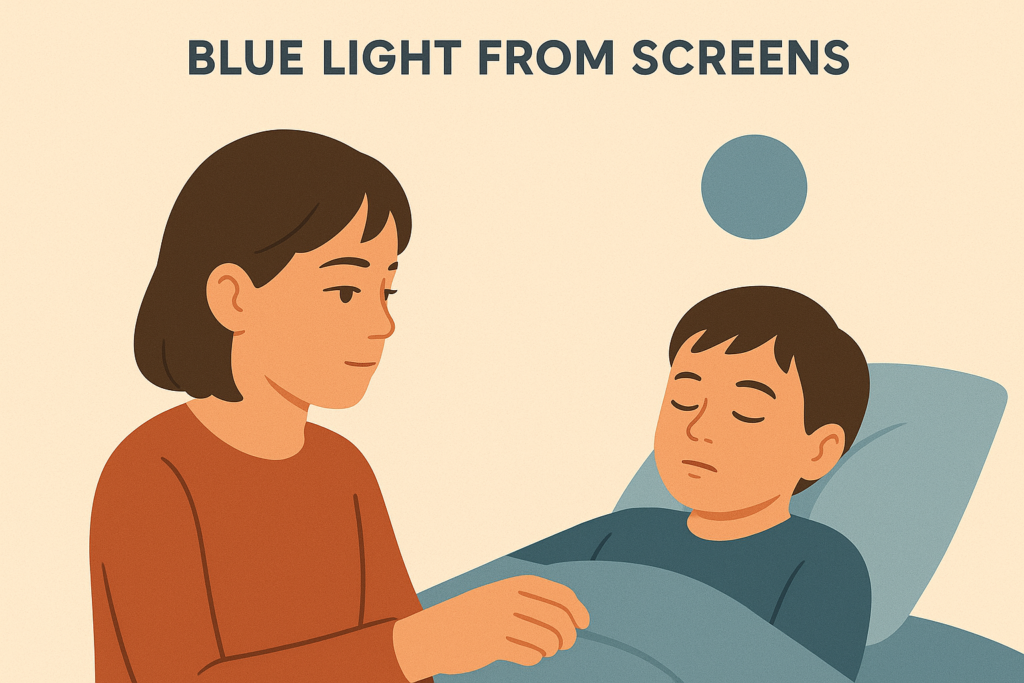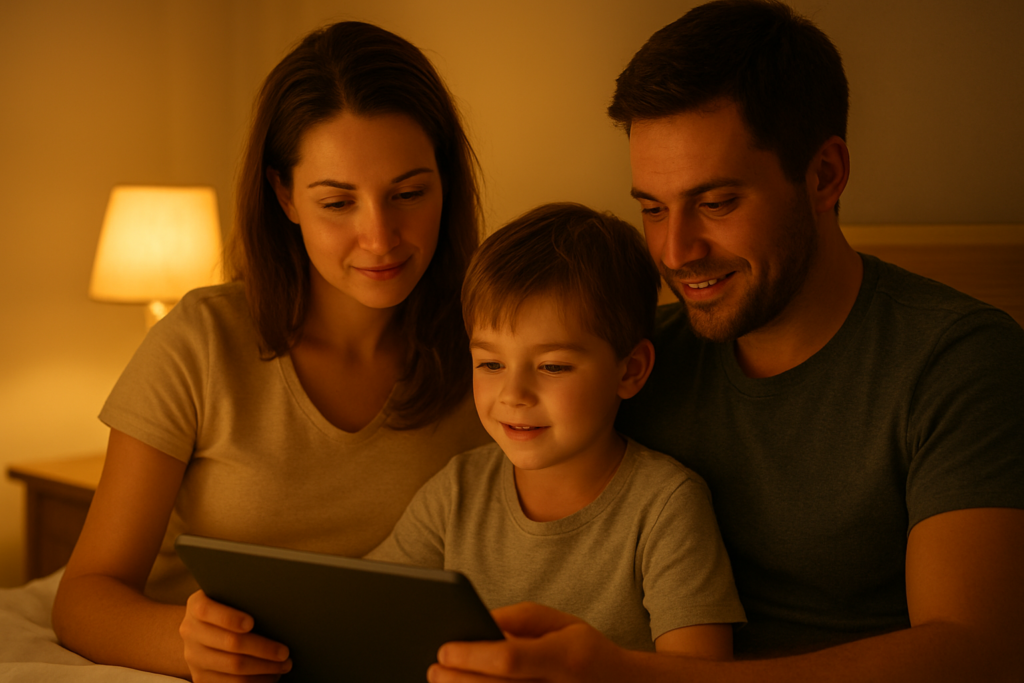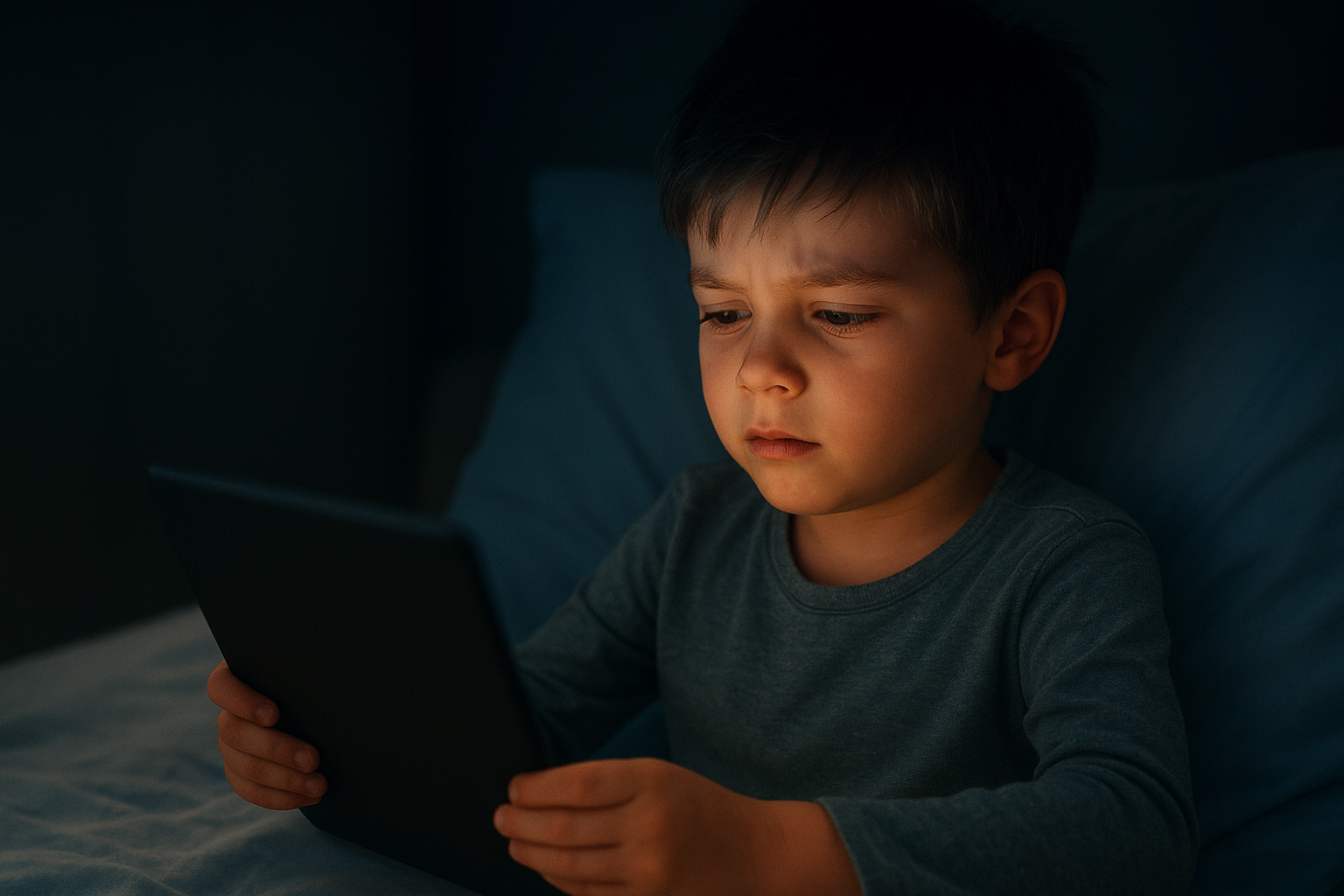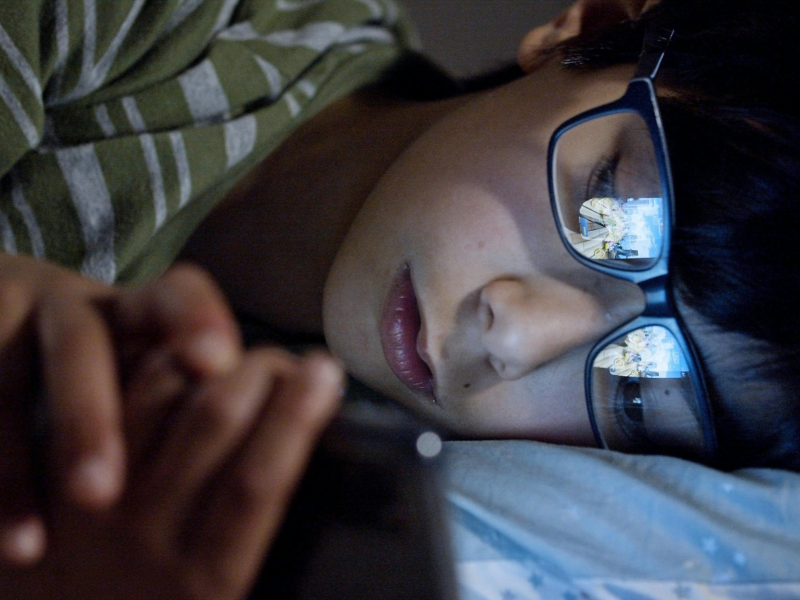Introduction
Screens have become a central part of modern childhood. From tablets and smartphones to smart TVs and laptops, children are exposed to digital devices earlier than ever before. While screens can provide educational benefits and entertainment, overuse—especially before bedtime—can negatively affect both eye health and sleep quality.
Children’s eyes are still developing, making them more sensitive to blue light and digital strain than adults. At the same time, healthy sleep is essential for learning, growth, and overall well-being. This article explores the science behind how screen time impacts children’s eyes and sleep, and provides practical, evidence-based strategies parents can use to protect their kids.
1. The Science of Sleep and Vision
Sleep and eye health are deeply connected. The body relies on circadian rhythms, biological processes regulated by light and darkness. Exposure to natural daylight triggers alertness, while evening darkness signals the brain to release melatonin, the hormone that promotes sleep.
Screens disrupt this natural process. Digital devices emit blue light, which mimics daylight and suppresses melatonin production. Studies show that children are more vulnerable than adults because:
- Their pupils are larger, letting in more light.
- The lens of a child’s eye filters less blue light compared to an adult’s.
- Their circadian rhythm is more easily shifted by late-night exposure.
2. Eye Strain and Nighttime Device Use
Beyond sleep disruption, late-night screen use also affects the eyes directly.
Digital Eye Strain in Kids
- Blurred or fluctuating vision
- Dry eyes from reduced blinking
- Headaches or eye pain
- Difficulty focusing at school
At night, these symptoms are often worse because children are using screens in low-light environments, which forces the eyes to strain even more.
Connection to Sleep: When eyes are fatigued and strained, children may struggle to relax enough to fall asleep. Over time, this cycle of late-night screen use, poor sleep, and visual fatigue becomes self-perpetuating.

3. Long-Term Effects of Screen Overuse at Night
The consequences of screen-induced poor sleep extend beyond bedtime.
- Myopia progression: Lack of quality sleep is linked to faster onset of nearsightedness.
- Reduced cognitive performance: Children who sleep less perform worse in memory and focus tasks.
- Behavioral issues: Irritability, mood swings, and difficulty concentrating are common.
- Weakened immune system: Sleep is critical for growth hormone release and repair processes.
📌 Did You Know?
Children who use digital devices within 1 hour before bedtime are 55% more likely to experience insomnia and reduced REM sleep.
4. Practical Rules for Parents
The good news is that parents can significantly reduce risks with consistent habits.
1. Establish a Tech Curfew
No screens 1–2 hours before bedtime. Replace them with calm, offline activities.
2. Keep Devices Out of Bedrooms
Children should not sleep with phones, tablets, or laptops nearby.
3. Encourage Outdoor Morning Light
Morning sunlight exposure resets circadian rhythm and supports eye development.
4. Adjust Device Settings
Enable “night shift” or “blue light filter” mode in the evenings.
5. Model Healthy Behavior
Children mimic parents—if you use your phone in bed, they’ll want to as well.
5. Building a Healthy Evening Routine

Consistency is key. A predictable evening routine teaches children’s brains when to wind down.
Ideas for screen-free activities:
- Reading together as a family
- Gentle stretching or yoga
- Listening to calm music or audiobooks
- Creative activities (drawing, puzzles)
The lighting environment also matters: warm, dim lighting promotes melatonin release, while bright LEDs or phone screens delay it.
📌 Did You Know?
Children need 9–12 hours of sleep per night, but studies show most school-aged kids get at least 2 hours less than recommended.
6. When to Seek Professional Help
Parents should consider professional evaluation if their child:
- Regularly struggles to fall asleep despite healthy routines
- Shows persistent signs of eye strain
- Has frequent headaches linked to screen use
- Exhibits sudden changes in school performance or mood
Eye exams are recommended:
- At 6 months
- At age 3
- Before starting school
- Every 1–2 years afterward
FAQ Section
Q1: Does blue light cause permanent eye damage in children?
No, but it disrupts sleep cycles and increases eye strain.
Q2: When can children safely start using tablets?
Experts recommend avoiding screens under age 2, and limiting time afterward with strict rules.
Q3: Do blue light glasses help kids sleep better?
They may reduce strain, but healthy sleep habits matter far more.
Q4: My child holds a phone very close to their face—should I worry?
Yes. It could indicate myopia (nearsightedness). Schedule an eye exam.
Q5: How many hours of sleep do school-aged kids need?
Between 9–12 hours each night, depending on age.
Conclusion
Technology is not the enemy—unbalanced habits are. Late-night screen use disrupts children’s sleep, strains their eyes, and impacts long-term health. Parents can protect their children by setting clear rules: no screens before bed, outdoor play during the day, and consistent sleep routines.
By making small, consistent changes today, you’re safeguarding not just your child’s vision, but their overall health and development.


